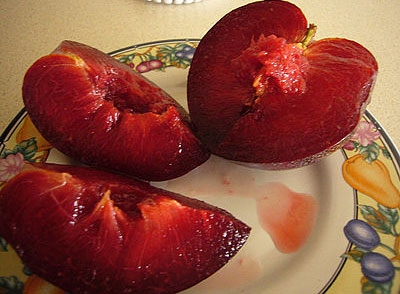
Zaiger is one of the few private breeders operating on a large commercial and worldwide scale, said UC Davis geneticist and plant breeder Tom Gradziel. U.S. universities and the U.S. Department of Agriculture are typically the powerhouses behind finding successful hybrids, because the process is laborious and time-consuming, exposing a small business to financial risk.
"Breeding fruit is like playing cards," said Gradziel. "You keep reshuffling the deck, and looking at how they come out. There are about 100,000 genes to play with."
Market Watch: A better prune, but will anyone care?
David Karp, Los Angeles Times
Jim Doyle, a now-retired UC Davis fruit breeder who was based at the UC Kearney Agricultural Research and Extension Center, crossed Improved French prune with Tulare Giant, a large-fruited fresh-market European plum, in 1992. The new variety, named Muir Beauty, was irresistibly delicious. Muir is higher in sucrose than French, which has more glucose. Because sucrose tastes sweeter than glucose, Muir tastes sweeter than French, even at the same total sugar content, said Carolyn DeBuse, who helped evaluate the fruit as Doyle's successor in the prune-breeding program from 1999 to 2007. DeBuse is now the UC Cooperative Extension orchard systems farm advisor for Yolo and Solano counties.